Everything You Always Wanted to Know About French Herb & Spice Blends
Don’t Buy Any, except maybe just the one
There were two choices: fill in the forms for my French taxes or clean the spice cabinet.
No prizes for guessing what happened.
There were the usual duplicate spice jars and a few out-of-date items for keeping because you never know. And, a surprising number of blends, given that I’m not a huge fan of spice blends.
Surprising, also, that hardly any are French.
There are always exceptions.
Épices Rabelais, a spontaneous supermarket purchase, was on the shelf. I had no idea what it was, I bought it purely because the box is so fabulous.
The Essential French Herb & Spice Blends
Herbes de Provence
Fines Herbes
Quatres Épices
Bouquet garni
None of these are in my possession. Blends, for almost any cuisine, rely on someone else to decide the exact balance of flavours. Plus, recipes vary between manufacturers and they can sometimes contain fillers, like cornstarch. The quality of the ingredients is also questionable. I have no faith that what ends up in a blend is the same quality as buying a single herb or spice from a reputable source.
Herbes de Provence
Do you have one of those ceramic jars of Herbes de Provence lurking in your pantry? 1
If you do, does it say what goes into the blend and in what amounts?
The genuine article will have a Label Rouge from France.2 This is a government decree to identify and certify food products that are deemed to be of superior quality. It does not have to be organic, it does not even have to be from France. It just has to conform to what has been identified as the good stuff. Confusingly, this may or may not include conforming to a standard preparation.
Since the Label Rouge can be applied to many things, what quality means varies across the certification, but it is meant to be an indication of above-par, according to someone. This is not to be confused with other more rigorous French certifications such as AOP, AOC, IGP, AB: all topics for another day.
For Herbes de Provence, a Label Rouge is also said to guarantee the percentages of each ingredient, thus a precise blend.
The Label Rouge percentages for Herbes de Provence are 19 % thyme and 27 % each of rosemary, winter savory and oregano. These proportions are based, as far as I can tell, on an age-old provençal recipe.
A non-certified Herbes de Provence blend may also include marjoram, bay leaf, fennel seed, lavender, sage, basil… If you have a jar in your spice cabinet, have a look and let me know what it says.
An online search for a Label Rouge Herbes de Provence in your country may reveal a place to buy some. At the time of going to press, I could not find an online source in the USA. The closest I came was from this supplier3 HOWEVER, their blend has 26% (not the genuine 27%) of each of the three main herbs and an extra 3% basil. Yet it has the Label Rouge! There is so much wrong in the world and now we also need to worry about the authenticity of authentification?
What irks me most is they have chosen to adulterate the traditional blend with basil. Of all things! Dried basil is an aberration. Use it fresh or do not bother. Adding it because this is supposed to be provençal is beyond acceptable.
Fines Herbes
In English, this translates as fines herbes.
So, what exactly does it mean.
The most consistent explanation is that fines herbes are all the herbs that grow in kitchen gardens, or potagers. This seems plausible, but the danger of the internet is we all just repeat the same misinformation.
Wikipedia, the French version, is my source of choice for explaining this culinary term. It says that fines herbes were defined by Auguste Escoffier in the early 1900s, in a recipe for an omelette aux fines herbes, and the herbs were mainly parsley and chives, with a little bit of chervil and tarragon.4 Julia Child has a recipe for this too.
No proportions are given but that mixture is about as French as they get. The other thing to notice is these are all soft-leaved herbs; herb blends are always dried and these herbs in particular do not dry well. There is no reference to a dried herb blend, so my assumption is Wikipedia is referring to fresh herbs.
Not all herbs take well to drying. Thyme, rosemary, sage, oregano—for example—are herbs that dry well. The soft-leaved kind, all of the plants mentioned for fines herbes, rarely survive this process with their flavour intact. Tarragon, at a stretch, otherwise these herbs should be used fresh or not at all, because the taste of dried is so inferior.
In conclusion, fines herbes refers to what you have growing on your windowsill or near the garden door, soft-leaved plants for the most part. Best to include at least parsley and chives and prefer fresh to dried.
Quatres Épices
The spice blend, Quatres Épices, is a French ingredient and it is most often a combination of pepper, clove, nutmeg and ginger. Sometimes cinnamon is used to replace the ginger but there are no hard and fast rules about the mixture. It is meant to mimic ground allspice.
The allspice berry is native to the French West Indies, so you will find it, or the quatres épices spice blend, used in dishes from these islands. In traditional French cuisine, it is used in recipes for pâtés, terrines, charcuteries and game dishes, in general.
I found one US source5, offering a good selection of products, which says the blend is born out of the 17th-century French colonization of North Africa and that the French use quatres épices to season the North African speciality of couscous. I am simply the messenger and this needs to be backed up with more evidence. I will start asking around.
To make things more confusing, there is also a French spice blend called Cinq Épices, which is Chinese Five Spice in English.
Bouquet Garni
An outlier in this category, because whole herbs and whole sprigs of the plant are used, this is technically a blend because the purpose of it in French cooking is to use these herbs in combination and not add them as separate ingredients.
Another distinction is that a bouquet garni can be either fresh or dried, or both at the same time, which is why I have no bouquet garni jars in the cupboard. If one is needed, I make it, and it will always have fresh parsley stems in it. Furthermore, I may wrap the whole thing in a leek green or two before tying it together. Bouquet garni means different things to different people.
The point of using a bouquet garni is that you want the flavour to seep out from the aromatics during cooking but you do not want bits to remain in the dish. By tying together in a tidy parcel, it is easier to fish the bundle out at the end. Think bay leaf; you add one and remove it before serving. If you do this with a few thyme sprigs, good luck fishing them out at the end. I speak from experience. Thus, the genius of the bouquet garni.
There is a version of bouquet garni which consists of dried herbs enclosed in a little muslin parcel. A useless purchase, at the risk of repeating myself, because this will be a random mix of varying quality, as are all bought blends.
Below is a useful short video on how to assemble a bouquet garni. This is the fresh kind, using leek, and string to help you remove it from the pot. He does say to tie it to the handle of the pot if you like. Plus, he adds a nifty bonus bouquet involving garlic cloves and toothpicks. This is in French but easily understood with the visuals. If anything is unclear, ask me what you need to know in the comments.
Épices Rabelais
Back to the tantalizingly packaged mystery spice blend.
Legend, and the company website, have it that this spice blend was created in Marseille in 1880 by Raynaud de Mazan, a man of curious disposition and culinary skill, who had the idea to bring together spices from North Africa with herbs from the Provençal hillsides.
The premise—of combining flavours from the cuisine of southern France with that of North Africa—makes perfect sense since they face one another on opposing shores of the Mediterranean Sea.
Naturally, the exact recipe for this blend is a highly guarded secret, even to this day. The composition is described thus:
« Rosemary, Coriander, Bay Leaf, Marjoram, Fennel, Aniseed, Herb Blend, Cloves, Cinnamon, Nutmeg, Spice Blend… and a few mystery ingredients »
Is it legal, in this era of rampant food allergies, to say that ‘spice blend’ and ‘herb blend’ and ‘mystery ingredients’ are used? Surely they are simply amping up the intrigue by repeating these magical words. The whole thing is a spice and herb blend, so that bit is factual.
Upon opening the box, the ingredients are not in a plastic packet but encased in a charming and eco-friendly white paper bag, folded over not even sealed. Cute on the inside too, but the overwhelming aroma was of cloves. It’s a good thing the box is so decorative and the brand storytelling is so convincing, otherwise, I’m not sure I would have persisted.
Once opened, you will need to transfer this to a sealed container to keep it fresh; the paper bag is not ideal.
Do have a look at the website. They have many more products and some fun merch. I am not sure how it works for shipping outside the EU but there are international sources of Épices Rableais, minus the stuff. Other online French food suppliers sell Épices Rabelais too, all the links are at the end.6
A Recipe for March
On the box, there is a recipe for pot-au-feu. I was unsure of what exactly to cook with the stuff so following the box seemed a good idea. It was. Pot-au-feu uses different cuts of beef but I had chicken pieces that needed eating, so a chicken pot-au-feu/braise of sorts was born.
In case you are unfamiliar, pot-au-feu is meat and bones simmered for hours in a vegetable-rich liquid. It is a meal in itself: the broth is served on its own to start, then a platter with the meat is presented, alongside or with, a platter of the vegetables and everyone helps themselves. Marrow bones are included and these can be served on their own with slices of grilled bread for spreading the marrow. Coarse grain mustard and cornichons are de rigeur as accompaniments.
A whole chicken, cut in pieces, would be ideal for my version but I had bone-in thigh and breast portions. Whatever you use, it must have bones. For flavour.
Vegetables can vary but please include leeks, carrots, and onions. I also used rutabaga plus separately cooked small potatoes. Slender branches of celery with leaves were added more as an aromatic than a vegetable, but they are for eating too. Turnips would have been great.
I cooked the potatoes separately and added them about 30 minutes before the end because there was no room in the pan! If you have room, add the potatoes about 1 hour before the end of cooking.
The Épices Rabelais lent a surprisingly good flavour to this otherwise unadorned dish. Cooking softened the the taste of the cloves so it mingled rather than dominated and the finished taste was certainly more all the spices.
Pot-au-feu is a subtle dish and I am highlighting this to manage expectations. No chilli or miso or umami blast of any kind, as is so often the case these days. Just simple fare, simply cooked. A reason why good quality ingredients at the outset are important; good stuff tastes good without the need for lots of flourishes.
This is easy to put together but cooking time takes a few hours so start well in advance or cook a day ahead and refrigerate until needed.
A perfect dish for early spring, when we are ready for warmer days but we do not always have them.
Chicken Pot-au-Feu aux Épices Rabelais
Serves 4 -6
2-3 bone-in chicken breast portions
6 bone-in chicken thighs
Sunflower oil
1-2 TBSP épices Rabelais
Table salt
1 large leek, cut into pieces
2 large carrots, peeled and cut into pieces
1 large onion, thickly sliced
1 rutabaga/swede, peeled and cut into chunks
2 inner celery branches
2-3 large garlic cloves, peeled and smashed
1 bay leaf
Small potatoes, allow 4-6 per person depending, peeled or not as you prefer
Baking parchment
Coarse-grain mustard and cornichons, to serve
Trim excess fat from the chicken pieces.
Put the chicken in a large mixing bowl, add just enough oil to coat lightly and toss well. Season the pieces all over with salt, then add the Épices Rabelais and toss again, using your hands to massage everything in. Let stand at least 30 minutes, covered.
Preheat the oven to 160ºC.
Heat a large ovenproof skillet, it needs to have a lid for later, and when hot, add the chicken pieces, skin-side down, and cook until golden brown. Turn and cook the other side until browned.
Add everything else except the potatoes, season the vegetable layer with some salt and add water to come up about two-thirds of the way.
Bring just to the boil, then lower the heat.
Cut a piece of parchment just larger than your pan, crumple it under some running water and squeeze out the excess; this makes it easier to fit in the pan. Set on top of the veg and tuck in lightly around the edges. Cover with a lid and transfer to the oven.
Cook slowly for about 1 hour, then remove and, using tongs, swap it around so the chicken pieces are on top of the veg. If you have room and are adding raw potatoes do it now and then tuck it all back in under the parchment and lid and return to the oven for another 45 minutes.
Check all is cooked, it may need another 20-30 minutes. And taste the broth before serving, you may need to salt a bit more.
To serve, arrange the chicken pieces on one platter, the vegetables on another and divide the broth between bowls to start. Accompany with coarse-grain mustard and cornichons.
NOTE: If you want to make this but do not want to get any Épices Rabelais, you could try replacing the spices with a good coating of dried thyme at the outset, to which you could add a tsp or 2 or 3 of ground cumin. And a generous grinding of black pepper. Another substitution that might be nice is ras el hanout, the Moroccan spice blend.
Don’t forget to look at your jars of French spice blends and tell me what the ingredients are!
Links and Further Reading
https://agriculture.gouv.fr/le-label-rouge-signe-de-qualite-superieure
https://www.economie.gouv.fr/particuliers/produit-label-rouge-quoi-vous-attendre#
https://www.france-export-fv.com/Herbes-de-Provence-Label-Rouge/en
https://fr.wikipedia.org/wiki/Fines_herbes#:~:text=Le%20terme%20fines%20herbes%20d%C3%A9signe,de%20trois%20ou%20quatre%20herbes.
https://sos-chefs.com/collections/spice-blends/products/quatre-epices
https://www.epices-rabelais.com/

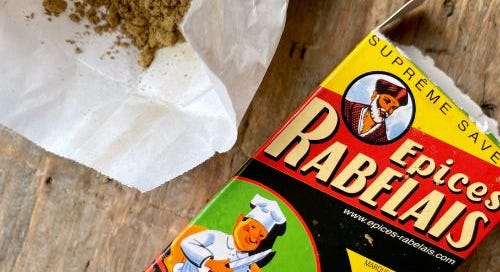



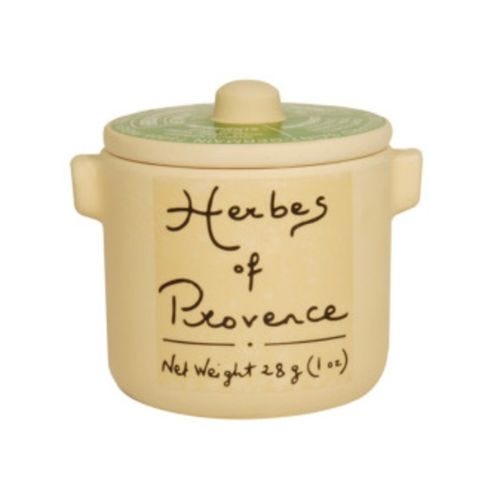
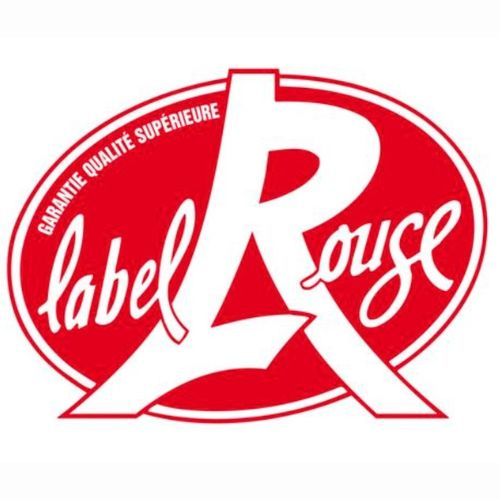

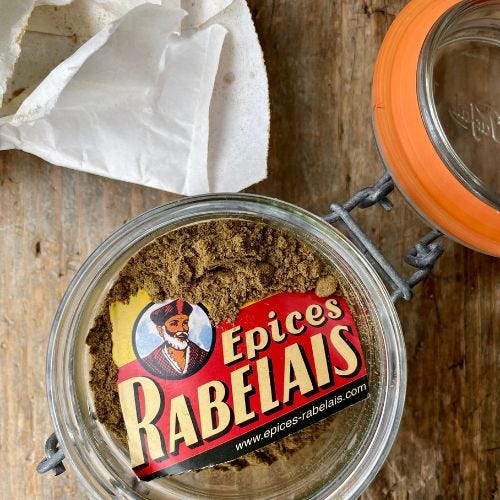
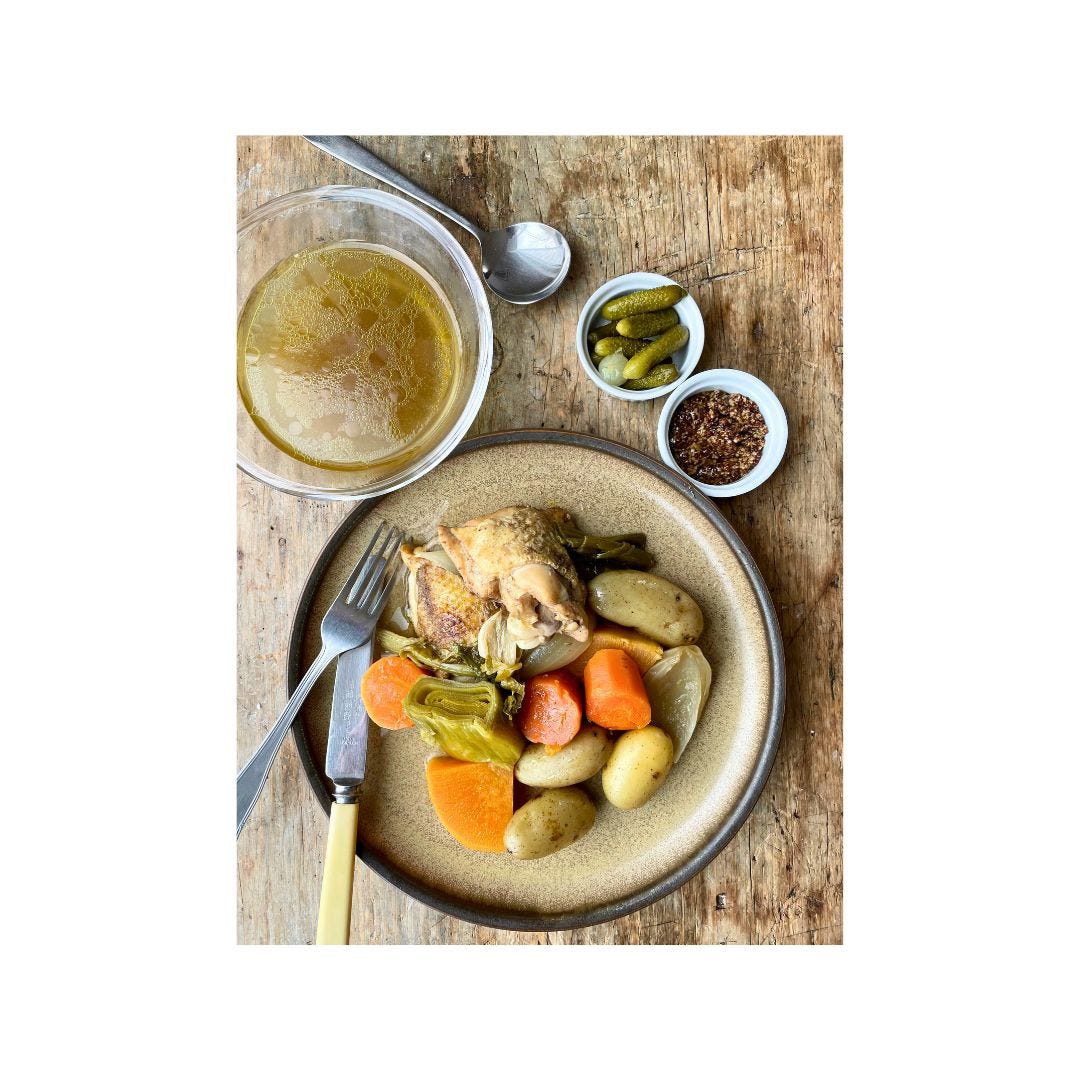
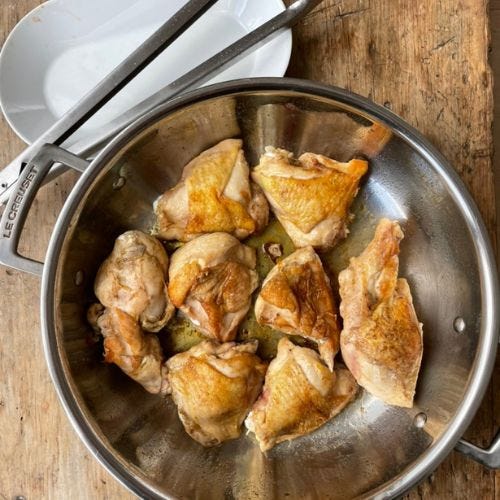
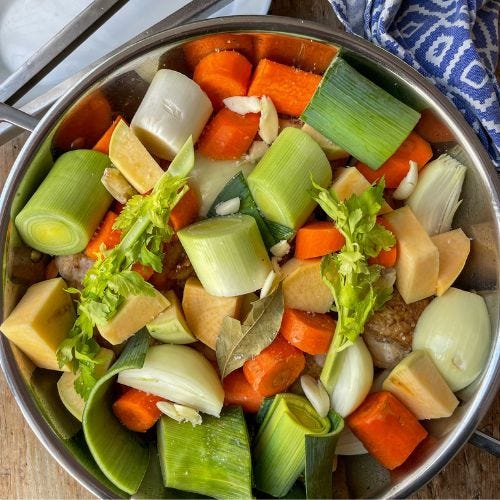
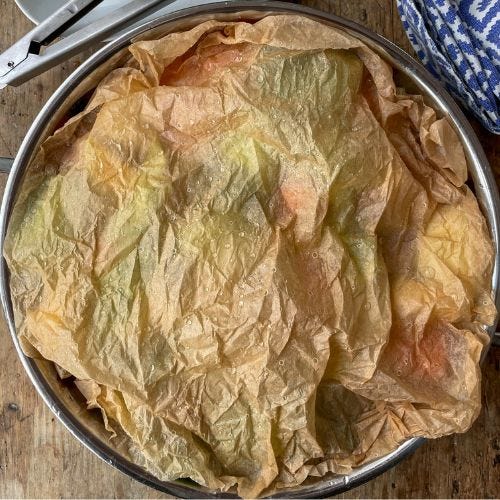
Brava! Everyone wanting to cook à la Français should read this. Fines Herbes, herbes de Provence, and bouquet garni are as integral to good cooking as all good ingredients. This is a great guide to choosing Laura. Merci! As for épice Rabelais, you can find it in every farmshop in France in the charcuterie section- knives, terrines, grinder, jars, as a popular ingredient for country pâtés. And yes, a bit heavy on the cloves so go easy. See you soon!
food detective - I love it